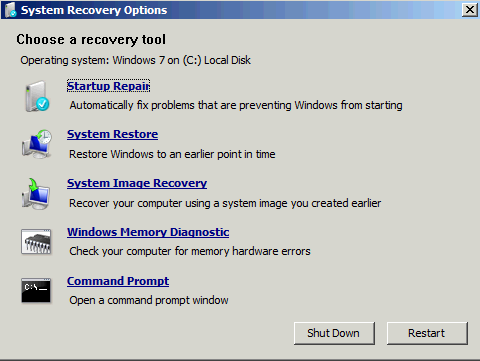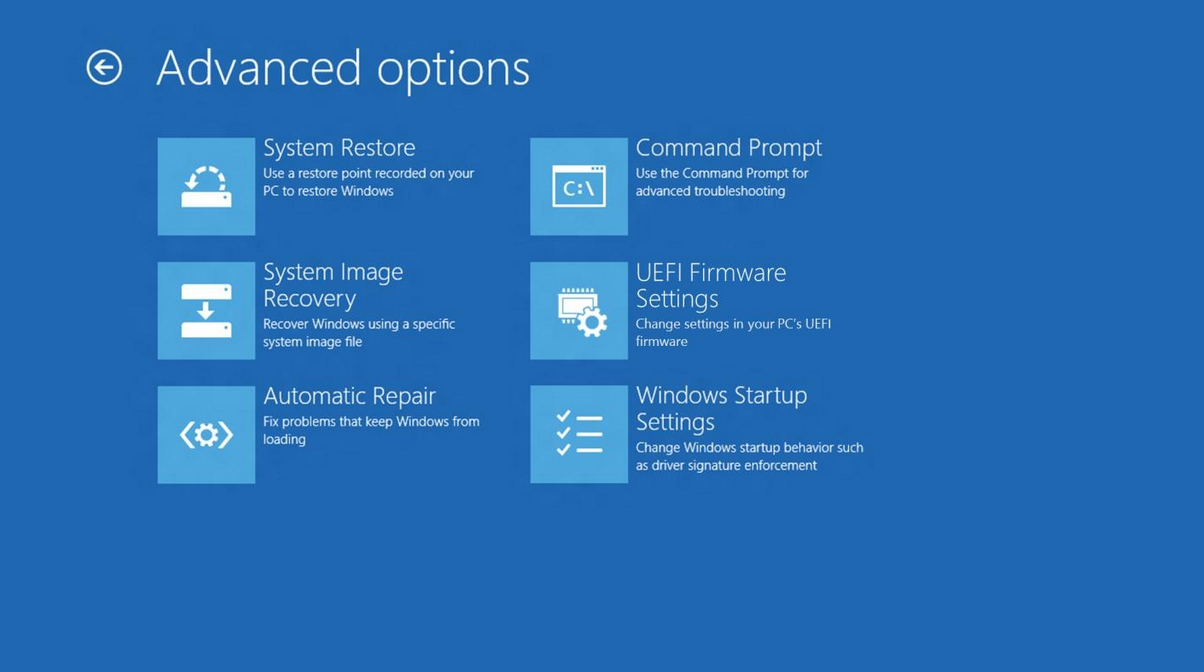| Snažíme se lokalizovat naše webové stránky v co největším počtu jazyků, jak je to možné, ale tato stránka je v současné době stroje přeloženy pomocí Google Translate. | zavřít |
-
-
produkty
-
prostředky
-
podpora
-
společnost
-
Upevňovací Boot Manager problémy pomocí Startup RepairFixing Boot Manager Issues Using Startup Repair
Podle Steve Horton Září 30, 2013bootmgr, startup repair, Windows 7, windows 8, Windows XP3 CommentsZapnutí počítače, jenž má být přivítáno slovy, které chybí BOOTMGR , je zážitek vyvolávající paniku. BOOTMGR je program, který běží při spuštění počítače a načte váš operační systém z pevného disku. Pokud chybí, systém Windows nemůže spustit systém. Dokonce i pokročilí uživatelé mají mnoho otázek, když se tato chyba objeví. Je můj počítač umírá? Chybí můj pevný disk? Jsou mé údaje v bezpečí? Existuje celá řada důvodů, proč by se tato chyba mohla objevit – vše od volného kabelu pevného disku až po špatnou aktualizaci operačního systému nebo dokonce i příležitostné chyby.
Odstraňování problémů BOOTMGR
Předtím, než vyzkoušíte něco jiného, restartujte počítač a nechte systém Windows znovu spustit. Občas se tato chyba vyskytuje náhodně a v počítači není nic špatného. Pokud se systém Windows načte normálně, nemusíte se starat, pokud se chyba často neobjeví. Měli byste se také ujistit, že nemáte žádné disky CD, DVD, diskety, jednotky USB nebo jiné externí paměťové médium zapojené do počítače. Počítač se pravděpodobně pokouší spustit z jednoho z nich, namísto systému Windows.
Pomocí opravy při spuštění opravit BOOTMGR
Pokud jste vyloučili výše uvedené příčiny a systém Windows se stále nedaří spouštět, nepřekvapujte: Systém Windows může provést operaci opravy a přeinstalovat systém BOOTMGR. Proces je podobný všem verzím Windows.
Než budete moci spustit některou z těchto možností, musíte nejdříve nakonfigurovat počítač, aby se spustil z disku Windows nebo z jednotky USB.
Zavádění z disku nebo jednotky USB:
- Po zapnutí počítače se krátce zobrazí text s výzvou k stisknutí tlačítka pro nastavení. To je obvykle klíč, jako je F2 nebo DEL .
- Nyní budete v systému BIOS vašeho počítače. Vyhledejte možnosti zavádění.
- V zaváděcí nabídce vyberte diskovou jednotku nebo USB (podle toho, co potřebujete) a umístěte ji v horní části pořadí bootování.
- Ukončete systém BIOS a uložte změny.
Oprava při spuštění se systémem Windows XP
Provedení opravy po spuštění s operačním systémem Windows XP:
- Vložte disk CD se systémem Windows XP do počítače.
- Restartujte počítač a po zobrazení výzvy k zavedení z disku CD stiskněte libovolné tlačítko.
- Stiskněte klávesu Enter při zobrazení obrazovky nastavení.
- Přijmout licenční smlouvu a stisknout tlačítko F8 .
- Na další obrazovce stiskněte klávesu R a spusťte systém Windows pokus o opravu.
- Tento proces může někdy trvat a počítač se během procesu může znovu spustit.
- Po dokončení této opravy vás systém Windows vyzve několik prvních instalačních otázek. Odpovězte na ně a pokračujte v systému Windows.
Oprava spouštění systému Windows XP by měla zachovat vaše soubory neporušené. Je však možné, že budete muset znovu konfigurovat některá nastavení a přeinstalovat aktualizace systému Windows.
Oprava při spuštění se systémem Windows 7
Oprava při spuštění systému Windows 7 je ještě snadnější proces. Pokud systém Windows 7 nedokáže spustit, spuštění při spuštění se často spustí automaticky a pokus o vyřešení problému. Pokud se spouštěcí oprava nespustí automaticky, může být také spuštěna ručně.
Provedení manuální opravy při spuštění systému Windows 7:
- Umístěte disk Windows 7 do počítače.
- Restartujte počítač a po zobrazení výzvy k zavedení z disku DVD stiskněte libovolné tlačítko.
- Postupujte podle pokynů na obrazovce a vyberte předvolby, které se na vás vztahují. (Datum / čas, rozložení klávesnice atd.)
- Na další obrazovce klikněte na položku Opravit počítač .
- Vyberte instalaci systému Windows, kterou chcete opravit.
- Na další obrazovce se zobrazí několik možností obnovení. Zvolte možnost Oprava po spuštění .
- Při spuštění opravy při spuštění instalace nalezne a opraví všechny problémy, které může. Mohli byste být vyzváni, jak pokračovat.
- Pokud se zobrazí výzva, vyberte navrhované akce.
- Po dokončení klikněte na tlačítko Dokončit a restartujte počítač a proveďte veškeré opravy.

Možnosti obnovení systému Windows 7Je možné, že oprava při spuštění neopravila společnost BOOTMGR poprvé. Může se spustit znovu automaticky nebo možná budete muset zkusit jinou manuální opravu. Pokud ano, opakujte výše uvedené kroky, abyste spustili druhou manuální opravu spouštění.
Oprava spouštění systému Windows 8
Windows 8 přichází s některými výkonnými nástroji pro obnovu a opravu systému. Proces přístupu k těmto nástrojům a spuštění opravy po spuštění je podobný procesu XP a Windows 7.
Provedení manuální opravy při spuštění systému Windows 8:
- Umístěte disk DVD nebo jednotku USB Windows 8 do počítače.
- Restartujte počítač a zobrazí se obrazovka nastavení systému Windows 8.
- Klikněte na možnost Opravit počítač .
- V nabídce Řešení potíží vyberte možnost Rozšířené možnosti .
- Zvolte možnost Automatická oprava .
- Váš počítač spustí diagnostický nástroj, který určí, které problémy je třeba opravit.
- Jakmile zjistí váš problém, pokusí se opravit BOOTMGR.
- Stejně jako u systémů Windows XP a Windows 7 se během tohoto procesu může počítač několikrát restartovat. To je normální a nemám co dělat starosti.

Možnosti obnovení systému Windows 8Pokud automatická oprava nevyřeší váš problém, možná budete muset zkusit jinou možnost, jako je Obnovení systému .
Was this post helpful?YesNoVolný, uvolnit Aktualizace ovladačů
Aktualizujte své ovladače za méně než 2 minuty, abyste si mohli užívat lépe výkon PC - Volný, uvolnit.
Volný, uvolnit Aktualizace ovladačů
Aktualizujte své ovladače za méně než 2 minuty, abyste si mohli užívat lépe
výkon PC - Volný, uvolnit.
Nenašli jste odpověď?Zeptejte se na naší komunity odborníků z celého světa a obdržet odpověď v žádném okamžiku vůbec.most relevant poslední články Připněte si to na Pinterest